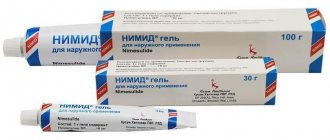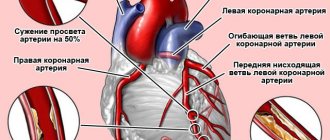Write a review
Reviews: 0
Manufacturers: DR. Gerhard Mann
Active ingredients
- Carbomer
Disease class
- Diseases of the lacrimal apparatus
Clinical and pharmacological group
- Not indicated. See instructions
Pharmacological action
- Hydrating
Pharmacological group
- Ophthalmic products
- Rehydrants
Pharmacodynamics and pharmacokinetics
After instillation of the gel, a protective film with moisturizing properties is formed on the cornea of the eye. Vidisik can be used as a replacement for the aqueous phase of tear fluid: by creating an imitation of the mucin layer, the gel helps to moisturize the cornea and conjunctiva. The drug also accelerates the regeneration of the epithelium and prevents its damage.
The pharmacokinetics of the gel have not been studied, since it does not penetrate the eye and does not accumulate in tissues.
The drug can remain on the surface of the eye for no more than 90 minutes.
Vidisic eye gel
Instructions for medical use of the drug
Description of pharmacological action
Artificial tear. Replaces the aqueous phase of tear fluid, imitates the mucous layer, moisturizes the conjunctiva and cornea. Forms a protective moisturizing film on the cornea, preventing damage to the epithelium and stimulating its regeneration.
Indications for use
- insufficient production of tear fluid; - manifestations of dry eye syndrome.
Release form
eye gel 0.2%; tube 10 g, cardboard pack 1;
Pharmacodynamics
Interacts with the mucin layer on the corneal epithelium: non-ionized carboxylic acid residues in the polymer form hydrogen bonds with mucin molecules, more ionized sections of the carbomer retain water around the molecule due to electrostatic forces. It has a pronounced adhesive ability to the membranes of epithelial cells and the mucin layer in the tear film. Forms a protective moisturizing film on the cornea, thickens the mucin and aqueous layers of the tear film, and increases tear viscosity. Prolonged contact with the cornea and a pronounced moisturizing effect determine the effectiveness in conditions accompanied by changes in the properties of mucin (acute respiratory diseases, infectious, including bacterial, fungal and inflammatory diseases of the eyes), with injuries and erosions of the conjunctiva and cornea, with a decrease in lacrimal secretion liquids.
Pharmacokinetics
Does not penetrate into the tissues of the eyeball and does not accumulate in them, and is not subject to systemic absorption from the tear ducts.
Use during pregnancy
Possibly if the expected effect of therapy exceeds the potential risk to the fetus and child.
Contraindications for use
Individual hypersensitivity to the components of the drug. With caution - pregnancy, breastfeeding.
Side effects
Allergic reactions, transient blurred vision, burning sensation, local eye irritation.
Directions for use and doses
Conjunctivally, instill 1 drop into the lower conjunctival sac 3-5 times a day, depending on the severity of symptoms.
Overdose
There are no data on drug overdose.
Interactions with other drugs
When carrying out additional local therapy, the interval between the administration of Vidisik and other drugs should be at least 5 minutes. Vidisik should be used last.
Special instructions for use
During treatment with the drug, wearing soft contact lenses is not recommended. When using contact lenses, they should be removed before instillation and put back on 15 minutes after instillation of the drug. During the treatment period, it is necessary to refrain from engaging in potentially hazardous activities that require increased concentration and speed of psychomotor reactions. The tube must be closed after each use. Do not touch the tip of the pipette to your eye.
Storage conditions
List B.: At a temperature of 2–30 °C.
Best before date
36 months
ATX classification:
S Sense organs
S01 Drugs for the treatment of eye diseases
S01X Other drugs for the treatment of eye diseases
S01XA Other drugs for the treatment of eye diseases
S01XA20 Artificial tears and other indifferent preparations
special instructions
When using Vidisik gel, do not touch the tip of the tube to the eye.
During the period of therapy, it is recommended to avoid using soft contact lenses.
Patients who wear contact lenses must remove them before each instillation and put them back on no earlier than 15 minutes after the procedure.
After each use, the tube should be tightly capped.
During the treatment period, it is recommended to refrain from performing work that requires increased concentration and speed of psychomotor reactions, including driving.
Special instructions for the use of Vidisik
Vidisik should not be instilled while wearing contact lenses; It is recommended to remove them and put them on again no earlier than 15 minutes after applying the gel. During pregnancy and breastfeeding . There are no clinical data on the safety of Vidisica during pregnancy and lactation. Preclinical studies have found that the risk of using Vidisic during this period is very low. However, during pregnancy and lactation, the doctor must carefully weigh the expected effect of drug treatment against the potential risk. Children . There are no data on the use of the drug in children, therefore Vidisic is not recommended for use in pediatric practice. The ability to influence reaction speed when driving vehicles and working with machinery . For several minutes after instillation of Vidisik, blurred vision may be observed due to the formation of mucus, so it is recommended to refrain from driving vehicles and operating machinery for a while.
Similar drugs:
- Glucose Substance-powder
- Glucose (Glucose) Solution for injection
- Glucose Oral tablets
** The Drug Directory is intended for informational purposes only. For more complete information, please refer to the manufacturer's instructions. Do not self-medicate; Before starting to use the drug Vidisik, you should consult a doctor. EUROLAB is not responsible for the consequences caused by the use of information posted on the portal. Any information on the site does not replace medical advice and cannot serve as a guarantee of the positive effect of the drug.
Are you interested in Vidisic? Do you want to know more detailed information or do you need a doctor's examination? Or do you need an inspection? You can make an appointment with a doctor - the Euro lab is always at your service! The best doctors will examine you, advise you, provide the necessary assistance and make a diagnosis. You can also call a doctor at home . Euro lab clinic is open for you around the clock.
** Attention! The information presented in this medication guide is intended for medical professionals and should not be used as a basis for self-medication. The description of the drug Vidisik is provided for informational purposes and is not intended for prescribing treatment without the participation of a doctor. Patients need to consult a specialist!
If you are interested in any other drugs and medications, their descriptions and instructions for use, information about the composition and form of release, indications for use and side effects, methods of use, prices and reviews of drugs, or you have any other questions and suggestions - write to us, we will definitely try to help you.
Composition and release form
The ophthalmic agent is produced in the form of a gel, which is instilled into the conjunctival sac. The active component of the drug is a high-molecular hydrophilic polymer - carbomer. It is contained in an amount of 2 mg per 1 g of the drug Vidisik. The following ingredients are used as auxiliary agents:
- Cetrimide;
- Sodium hydroxide;
- Water for injections;
- Sorbitol.
The drug Vidisik is packaged in tubes of 10 g. A cardboard box contains 1 tube, instructions for use of the medicine.
Drug interactions
There is no information on drug interactions with other medications. However, ophthalmic gel can prolong the contact time of other medications with eye tissue. Therefore, experts recommend against simultaneous instillation of Vidisik with other medications.
When using several drugs, it is necessary to observe the interval between administrations. It should be 5-10 minutes when using drops, 15 minutes if the second drug is released in the form of an ointment. In any case, instillation with Vidisik is recommended to be carried out last.
Analogue drugs
Vidisik eye gel has the following analogues, which are also based on carbomer:
- Oftagel;
- Lakropos;
- Sikapos.
The listed agents have similar pharmacological effects, routes of administration, indications, and side effects. If there is hypersensitivity to carbomer, specialists can replace Vidisic with the following medications:
- Visomitin, created on the basis of plastoquinonyldecyltriphenylphosphonium bromide;
- Slezin, the active ingredients of which are dextran and hypromellose;
- Natural tears, created on the basis of the water-soluble polymer complex Duasorb.
It must be remembered that drug replacement can only be carried out by an ophthalmologist, who will take into account the severity of the patient’s condition, concomitant pathologies, and individual characteristics of the body.
Indications for use
The ophthalmic drug is used as part of replacement treatment for conditions that provoke the development of excessive dry eyes:
- dry keratoconjunctivitis (development of specific inflammation of the conjunctiva of the eyes);
- changes in the functional activity of the lacrimal glands, which leads to a decrease in the production of tear fluid;
- development of “dry eye syndrome” due to overwork.
Pharmacological properties
The main active ingredient of Vidisik gel is carbomer, which is a transparent biologically inert hydrogel. This compound is similar in composition and pH value to natural tear fluid. Once on the surface of the cornea, carbomer creates a delicate protective film that can retain water molecules on the mucous membranes of the eye. This helps to moisturize and lubricate tissues, eliminating unpleasant symptoms (itching, dryness, burning, photophobia).
Another important property of Vidisik gel is its ability to accelerate the healing process of damaged epithelium. The drug is evenly distributed throughout the tissues of the eye and is gradually washed off during blinking. On average, the residence time of the drug on the mucosal surface is 1.5 hours after instillation.
Instructions for use
Vidisik must be injected into the lower conjunctival sac, 1 drop no more than 5 times a day. In this case, the last instillation is recommended to be carried out 30-40 minutes before going to bed.
When using eye gel, you should adhere to the following algorithm:
- wash your hands thoroughly before opening the tube;
- Place 1 drop in each conjunctival sac, after which you need to blink several times so that the medicine is distributed evenly throughout the tissues of the eye;
- During instillation, it is necessary to avoid any contact of the tip with foreign objects. This will prevent infection of the drug;
- After use, the tube must be tightly closed immediately.
If the patient uses soft contact lenses, the devices must be removed before instillation of Vidisic. It is recommended to reinstall lenses 15 minutes after applying the gel. During therapy, ophthalmologists recommend stopping wearing soft contact lenses in favor of glasses.
Adverse reactions and overdose
Immediately after instillation of the drug Vidisik, patients note the development of a temporary decrease in visual acuity. In rare cases, an ophthalmic agent leads to the development of an allergic reaction and pain in the eye area.
The drug contains cetrimide as a preservative, which can cause eye irritation and damage to the corneal epithelium with long-term use of Vidisica. Therefore, if burning, redness, a feeling of sand in the eye, or tingling occur, it is recommended to stop using the eye gel and replace the drug with a product that does not contain preservatives.
If the therapeutic dose is observed, an overdose does not develop. If the prescribed dosage is exceeded, the patient increases the risk of developing adverse reactions.



